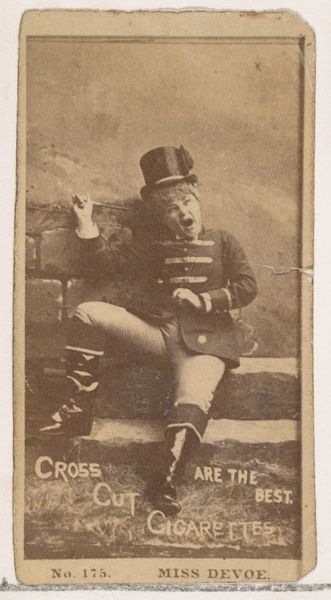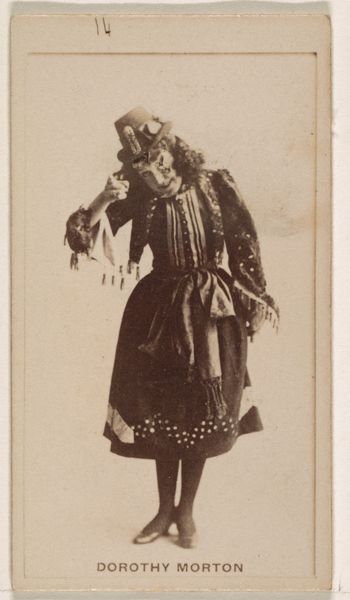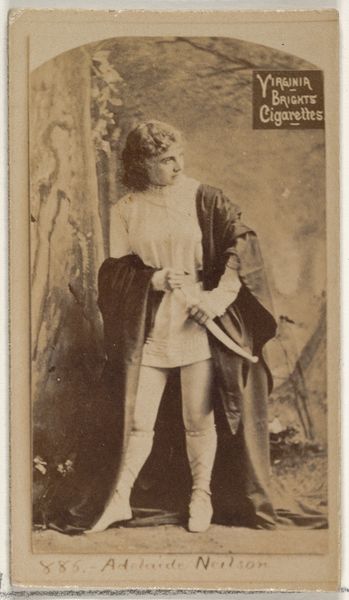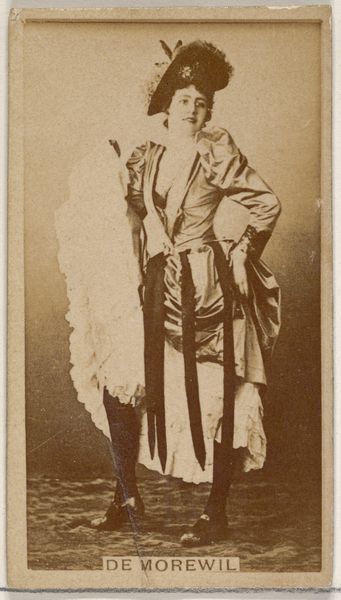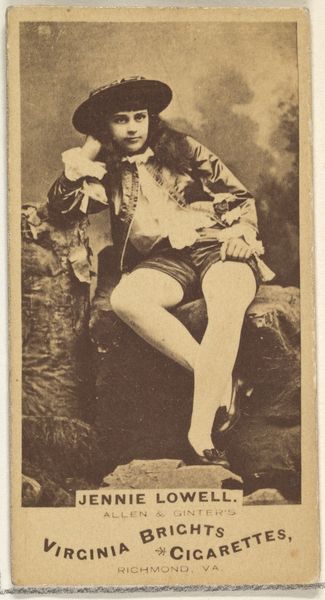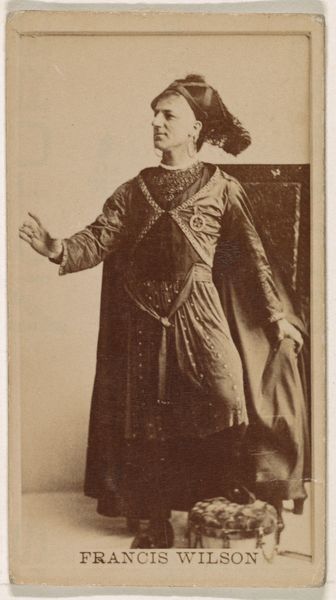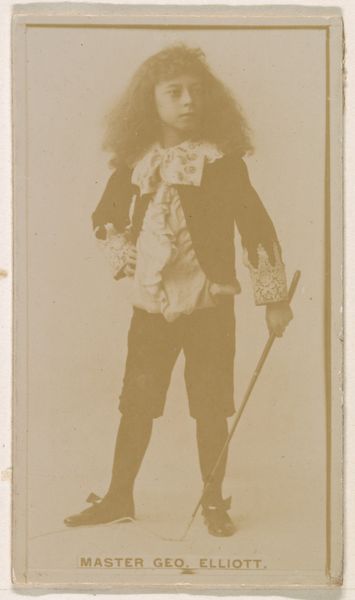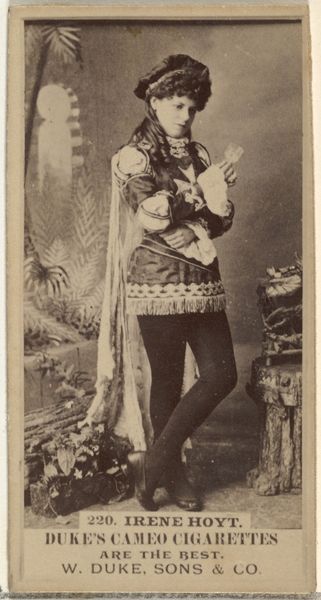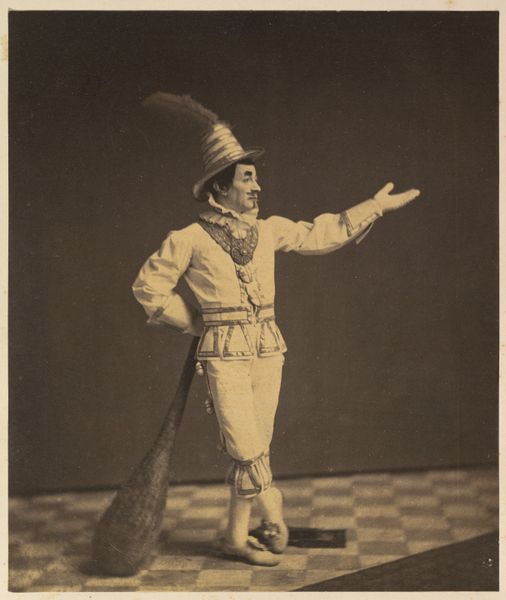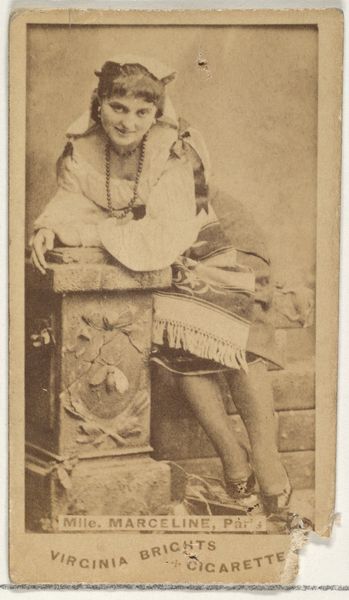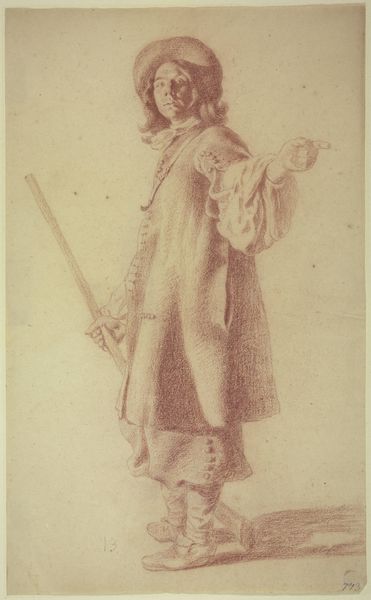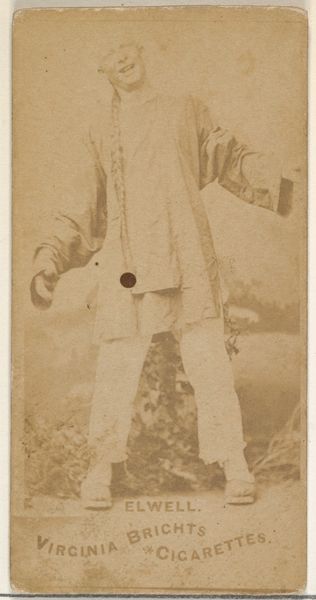
photography
#
portrait
#
pictorialism
#
caricature
#
photography
#
united-states
#
portrait drawing
Dimensions: 18 × 14.5 cm (image/paper); 36.8 × 26.5 cm (mount); 38 × 28 (hinged paper)
Copyright: Public Domain
Editor: This is "Shylock - A Sketch," a photograph by Joseph T. Keiley, circa 1899. It’s currently housed at the Art Institute of Chicago. It depicts a figure in what seems like a theatrical pose, maybe a character from Shakespeare? It’s quite dramatic, with soft focus and a hazy atmosphere. How do you interpret this work? Curator: Well, considering Keiley’s association with Pictorialism, this piece is less about photographic accuracy and more about artistic expression and a statement. Given the title, "Shylock," Keiley’s playing with established anti-Semitic tropes, which were unfortunately pervasive in art and theater. He’s not simply photographing a man; he’s invoking a deeply charged and politicized character. How does this photograph’s hazy aesthetic influence how we see this controversial imagery today? Editor: It's almost like he's intentionally softening the sharp edges of the caricature, making it less overtly offensive while still relying on the viewer's existing biases to fill in the gaps. So, it's less of a direct attack, but perhaps more insidiously perpetuating harmful stereotypes? Curator: Exactly. The “sketch” in the title suggests a preliminary study, almost excusing the work from needing to be fully realized. In his approach, what's most compelling to me is the politics of imagery. Think about the late 19th century—a period of increased immigration and heightened social anxieties. The image could arguably reflect fears of the “other,” subtly amplified through the visual language of art. What impact would such a visual have on a public viewing it? Editor: It's unsettling to think how art can be complicit in reinforcing prejudice. I guess, by understanding the cultural context, we can critically analyze images and not just passively consume them. I thought this photograph was interesting aesthetically, but now I can understand that the style reflects the complex racial politics of the time. Curator: Precisely, this approach shows how institutions and socio-political powers are intrinsically linked to the production and perception of art. The more we know about the historical currents shaping artistic expression, the better equipped we are to have conversations on its original setting and our present circumstances.
Comments
No comments
Be the first to comment and join the conversation on the ultimate creative platform.
